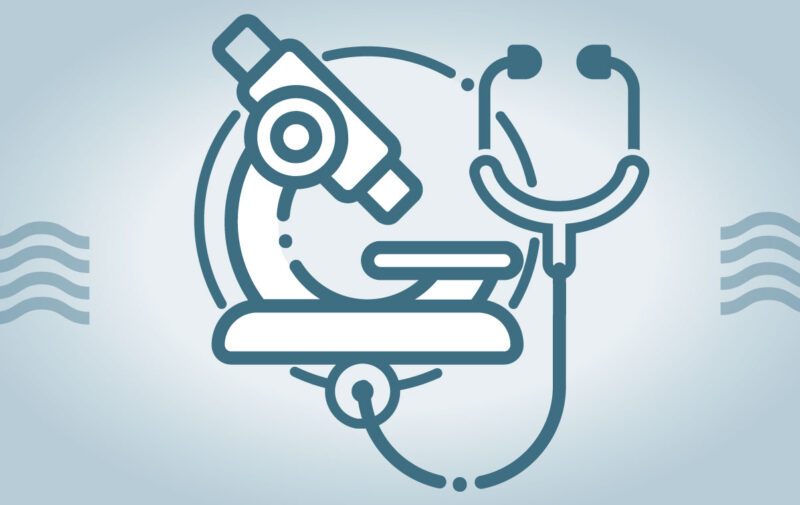
New Investigator Program
The Role of Nesprin 3 in Mammalian Neural Stem Cell Aging
Year Awarded:
2017
As people get older, stems cells in their brains age with them, which can contribute to age-related diseases. However, the mechanisms underlying stem cell aging aren’t yet completely understood. This work seeks to better understand the processes by which neural stem cells decline, with the goal of improving health for senior citizens.
The researchers found that although the role of nesprin-3 remains elusive; this study produced more knowledge that had not previously been shown in the research. The lab’s use of data and extensive controls revealed that the available tools for this research are not sufficient for this investigation and not functioning as were reported. This knowledge will inform future work.

New Investigator Program
Mechano-electrical Feedback in Pathophysiology of Atrial Fibrillation: Novel Strategy for Antiarrhythmic Therapy
Year Awarded:
2017
Atrial fibrillation (AF) is an abnormal heart rhythm that can increase a person’s risk for heart failure and stroke. While strategies for preventing these complications exist, less work has been done on a cure. This project sought to understand the mechanisms behind AF, with the goal of informing new therapies and improving patient outcomes.
The researchers gained crucial knowledge and understanding about the mechanisms contributing to AF by successfully completing all proposed experiments. These experiments included engineering a human cardiac tissue model, identifying novel potential targets for pharmacological treatment against AF, and understanding what plays a role in the protection of the heart against pathological changes in the settings of chronically elevated blood pressure. This project was successful in increasing knowledge, fostering collaborations, publications, and developing new funding opportunities.

Strategic Research
Measuring and Addressing Disparities in the Quality of Care among Wisconsin Health Systems
Year Awarded:
2017
Wisconsin performs below the U.S. average on most metrics of disparities in quality of care. Because of this, quality of care is often lower for minority, low income and uninsured populations. These disparities contribute to poor health outcomes for disadvantaged patients and need to be publicly reported and addressed via sustained, collaborative action.Conclusion: The project has already produced one major study, the WCHQ Health Disparities Report, which was released in the fall of 2019. The study identifies where gaps in health outcomes and care exist in Wisconsin and incorporates data categorized by race and ethnicity, insurance coverage and geography. Further work is ongoing.

Collaborative Health Sciences Program
Paradigm Shifting, High Throughput Assay for Serial Quantification of HIV Reservoirs
Human immunodeficiency virus (HIV) currently has treatment options available that suppress HIV infection and renders patients noncontagious. However, it remains incurable and a portion of people living with HIV have poor clinical outcomes, even when treatment is “working.”
Year Awarded:
2015
Human immunodeficiency virus (HIV) ─ a virus that attacks the cells that help the body fight infection ─ currently has treatment options available that suppress HIV infection and renders patients noncontagious. However, it remains incurable and a portion of people living with HIV have poor clinical outcomes, even when treatment is “working.”
The researchers developed two tests that worked well with controls but were unable to reliably determine the amount of HIV reservoir. The first assay was an RNA purification version of a previous TILDA assay, and the second was a more complicated assay that required the development of a cell line. However, they were able to show a link between features on patients’ T cells and poor health outcomes. This knowledge will inform future work and the researchers continue to explore ways to stimulate patient samples that will be more reproducible.

Collaborative Health Sciences Program
Quantitative Models to Define Cancer Cell Heterogeneity and Predict Patient Drug Responses
Year Awarded:
2016
Multiple myeloma is considered an incurable cancer that forms in plasma cells in bone marrow which has a significant impact in Wisconsin. One of the challenges associated with treating this and other cancers is knowing how individual patients are likely to respond to different drugs. The goal of this research was to develop a new, comprehensive approach for characterizing patient drug responses.
As a result of the project, a suite of new capabilities to quantify patient tumor cell therapy response was developed, allowing researchers to determine how cells respond to common therapies and seek more funding to test the predictive capabilities of this approach. In the future, patients could see more effective treatment as a result of this and derivative work.

New Investigator Program
Reprogramming B-cell Metabolism to Prevent and Rescue Type 2 Diabetes
Year Awarded:
2016
Diabetes affects almost 600,000 people in Wisconsin and costs state residents $6.15 billion per year, numbers which are expected to triple in the next 15 years. Type 2 diabetes (T2D) accounts for the majority of these cases and is linked to the failure of insulin secretion from pancreatic β-cells (beta cells) that keep blood sugar in check. These rapidly climbing number pose a significant burden on the healthcare system.
The researchers identified a new potential target for diabetes therapy, the metabolic enzyme pyruvate kinase (PK), which has been found to be sufficient in initiating and amplifying insulin secretion. Their work suggests that PK activation could be utilized to promote the healthy metabolic function of β-cells in order to prevent or reduce T2D.

COVID-19 Response Grant
A Negative Pressure Isolation Head Chamber to Protect Health Care Workers from Airborne Transmission of Aerosolized Viruses
Year Awarded:
2020
COVID-19 had infected more than 2 million people worldwide by April 2020, including more than 9,000 health care workers who had inadequate access to standard personal protective equipment. As a result, health care workers developed their own equipment and guidelines to protect themselves from infection though all of these devices lacked proof of effectiveness. The goal of this project was to test the effectiveness of the Badger Box, a novel portable negative pressure isolation box that can act as both a physical barrier and containment unit for aerosolized viruses. Preliminary results indicated the Badger Box’s capability to capture over 95 percent of particles.

COVID-19 Response Grant
Teaching the General Public How To Test and Maintain Readily Available Face Masks
Year Awarded:
2020
When the United States Center for Disease Control (CDC) began encouraging everyone to wear masks to help reduce the spread of COVID-19, many people were unprepared. Some individuals didn’t know how to properly wear a mask while others weren’t able to obtain one. However, evidence continued to mount that proper use of masks was critical to managing COVID-19. Through instructional videos, this project focused on teaching Wisconsinites how to evaluate and properly use the masks that are readily available to them to help protect people from COVID-19.
The grant team was successful in developing a mask solution that, if widely adopted, would help lessen the impact of COVID-19. They found that mask fit was crucial for filtering aerosol, which are smaller respiratory droplets, both for inhalation and exhalation. The team created three informational videos focused on the importance of mask fit, how to improve mask fit, and how to choose the right mask. The videos were showcased by several news outlets alongside interviews with the principal investigator; the video Can Your Mask Stop a Cough? – Mask Study using a Laser has over 30,000 views on YouTube as of June 2021.

Strategic Education
Wisconsin Partnership Program Scholarship
Year Awarded:
2019
The Wisconsin Partnership Program at the UW School of Medicine and Public Health (SMPH) has established the Wisconsin Partnership Program Scholarship Program – a four-year scholarship created with the goal of increasing recruitment of medical students at the SMPH from communities that are disproportionately impacted by health inequities and poor health outcomes. Funded by the Partnership Education and Research Committee (PERC), the scholarship program is designed to enhance the recruitment and retention of medical students in Wisconsin, and in doing so, help create and sustain a physician workforce that reflects and keeps pace with Wisconsin’s diverse population.

New Investigator Program
Identifying the Mechanisms of Nerve Regulation of Heart Regeneration
Year Awarded:
2018
Heart failure continues to be a major health issue in the United States, characterized by 6 million adults affected in the years 2015-2018, according to the American Heart Association. Ischemic injury is caused by the absence of or diminished flow of blood, which can lead to heart disease and heart failure that affects the function of the heart by reducing its ability to pump blood effectively. This project explored new strategies to repair the adult human heart following injury caused by heart disease, which can cause irreversible loss of part of the heart muscle. The research team identified mechanisms that occur in heart regeneration in newborns that could be applied to adult hearts in order to aid in cardiac regeneration. These data support the possibility of people regaining cardiac function after injury.